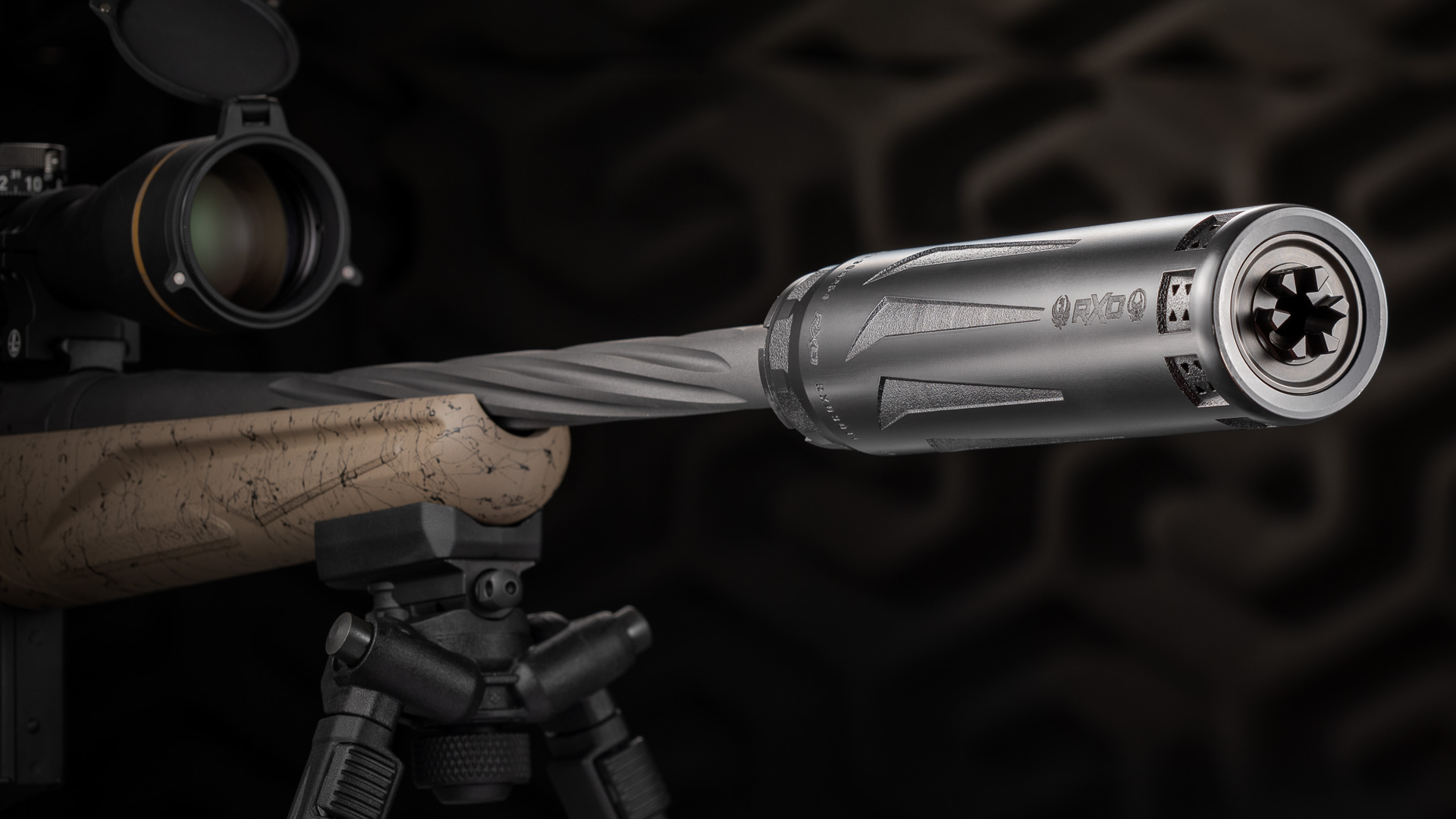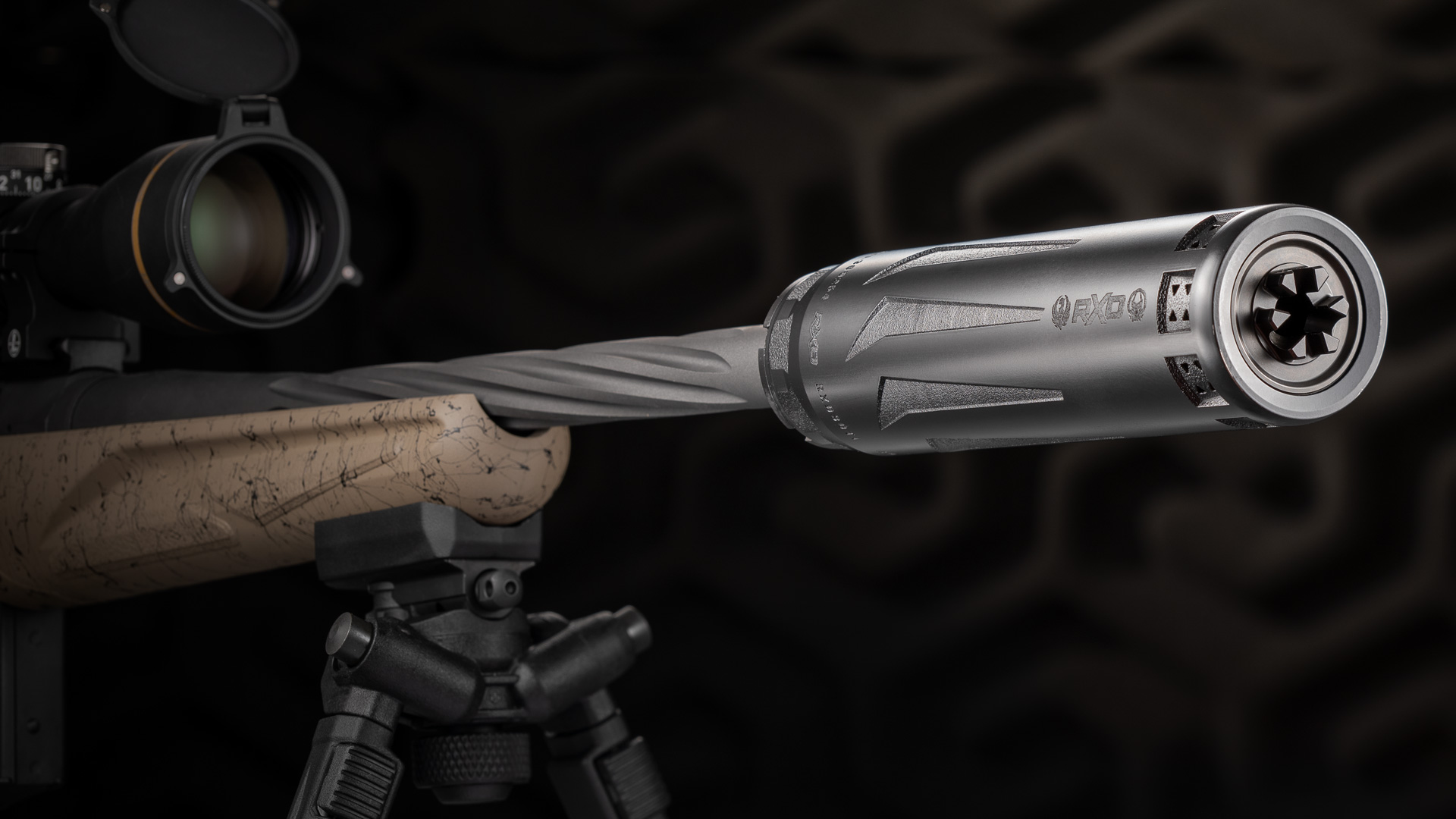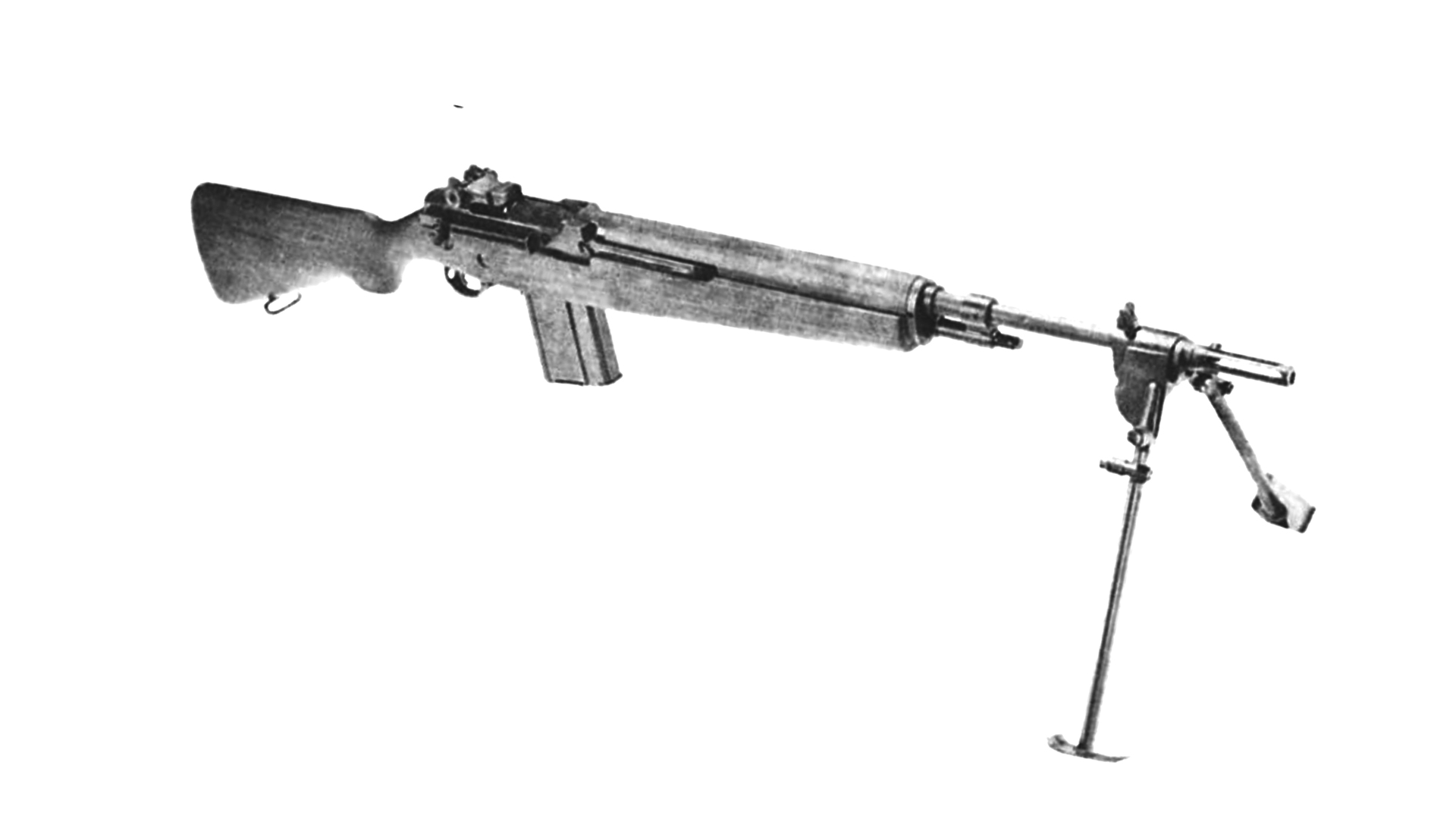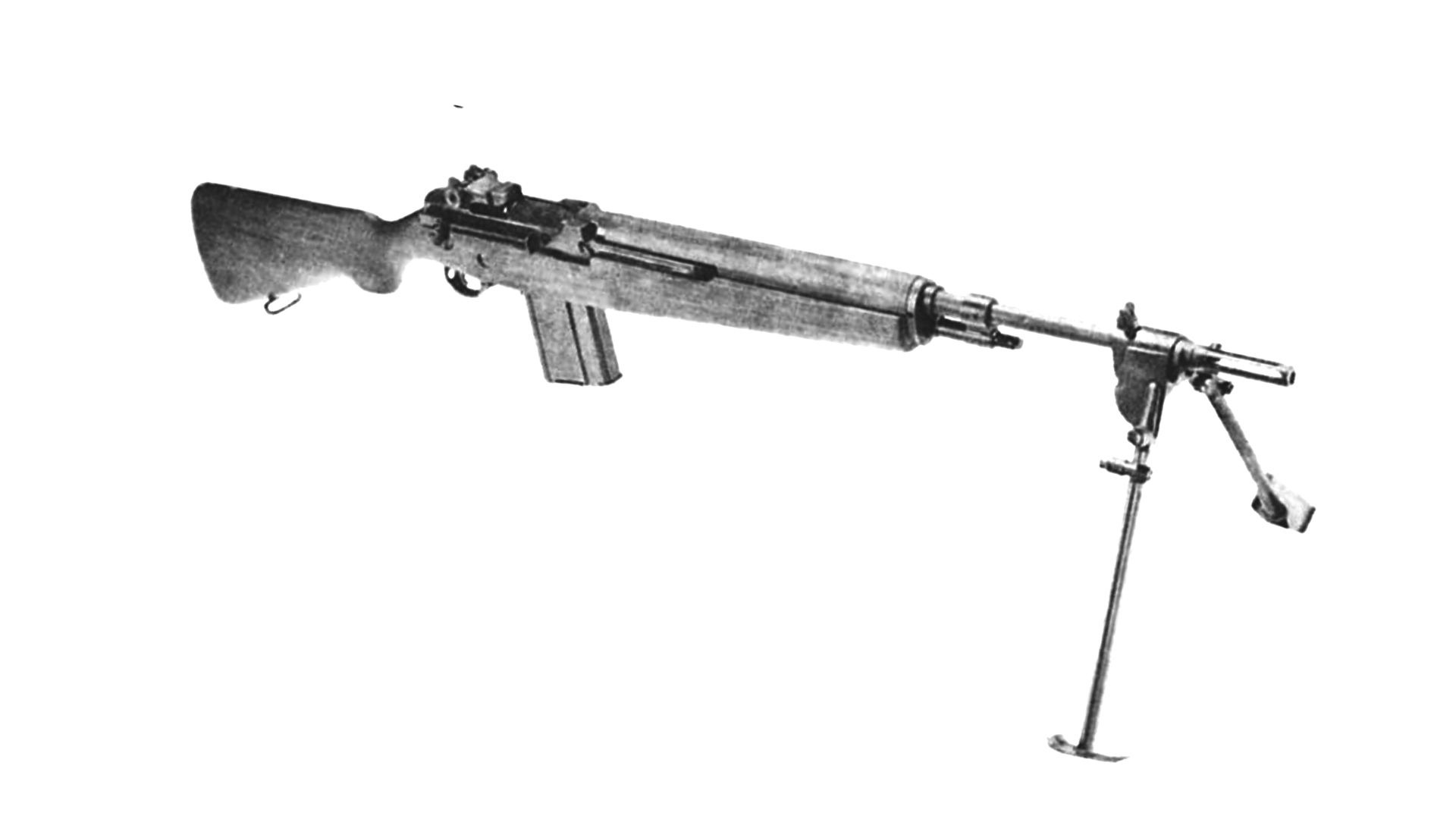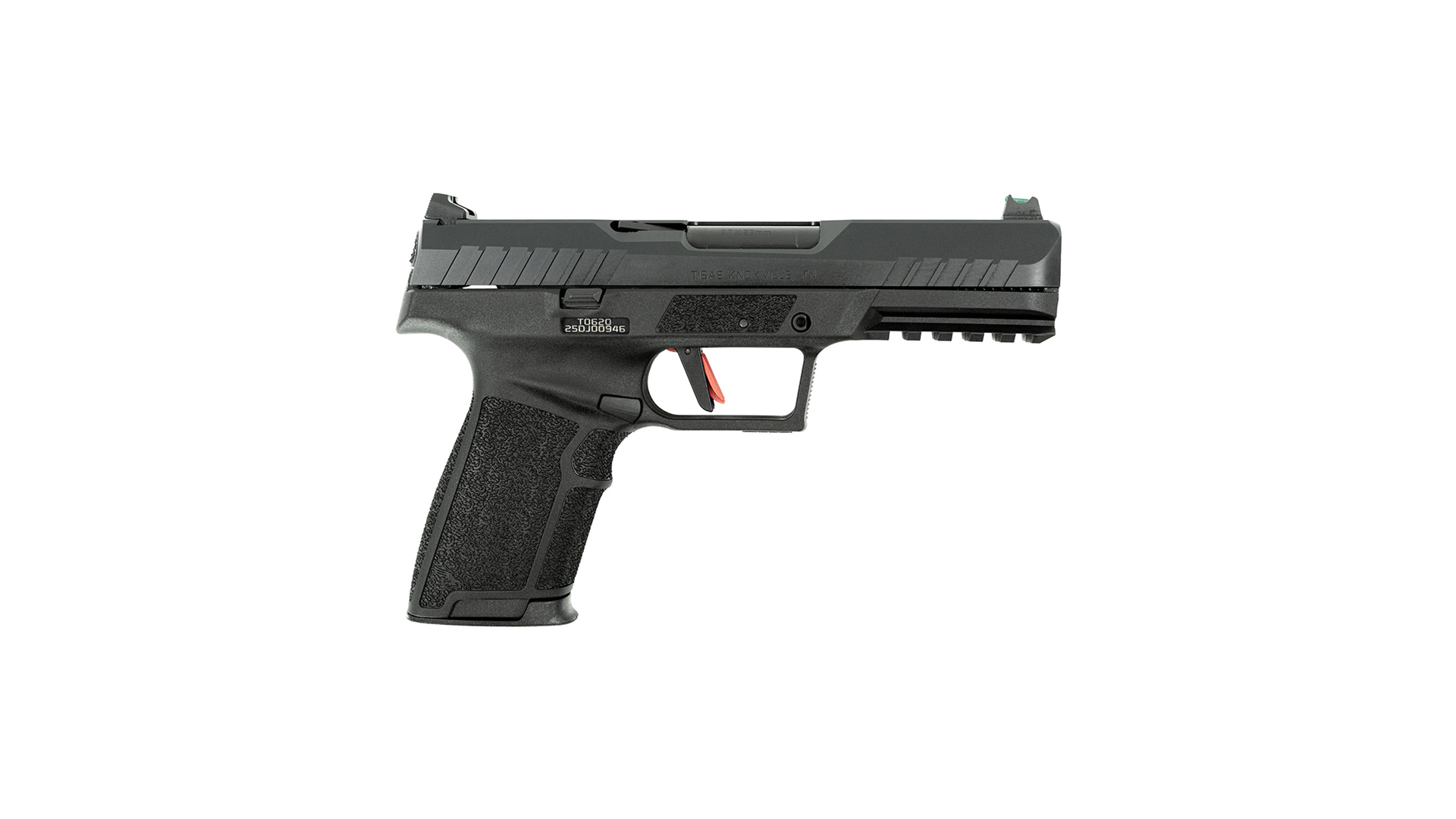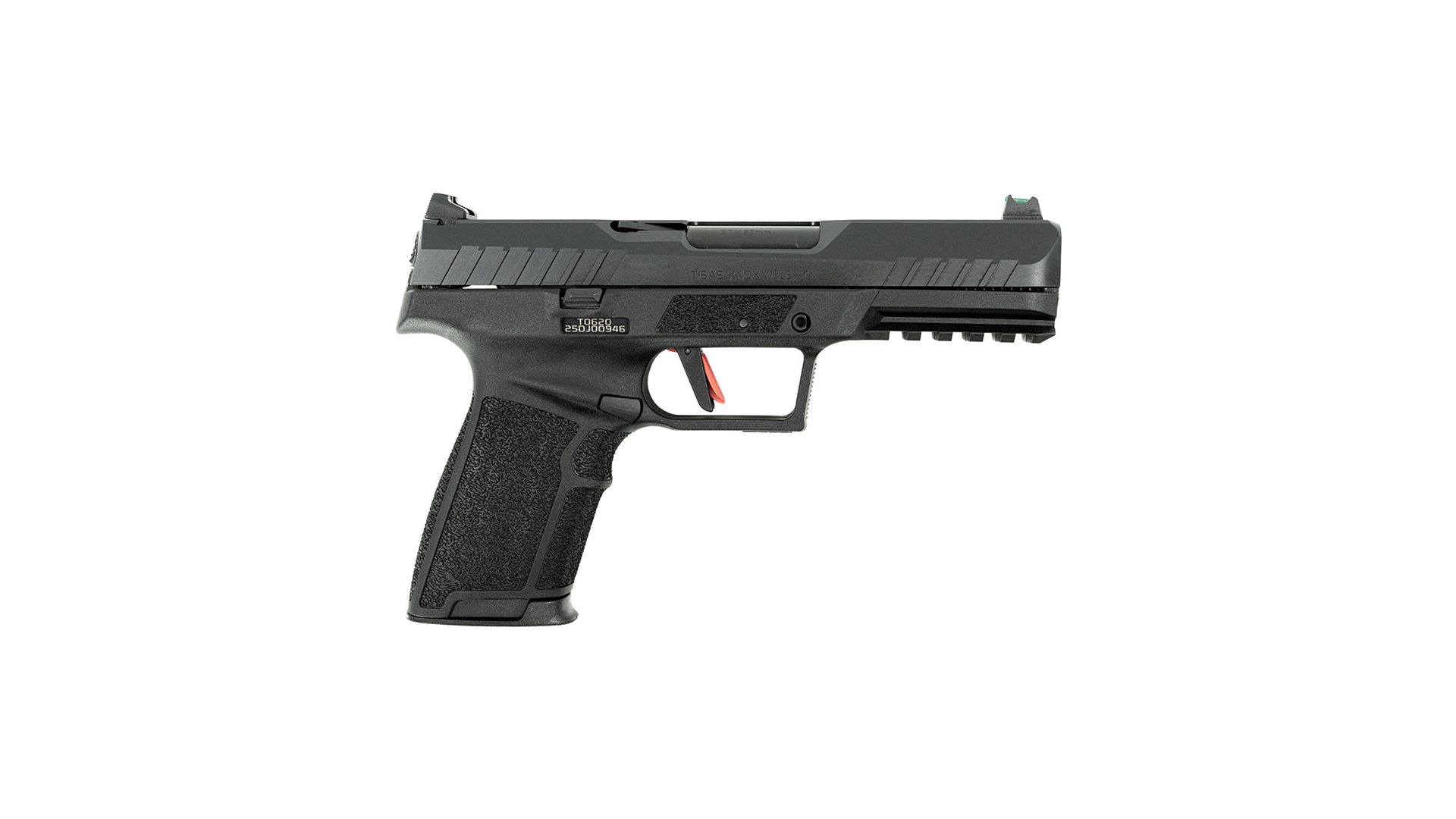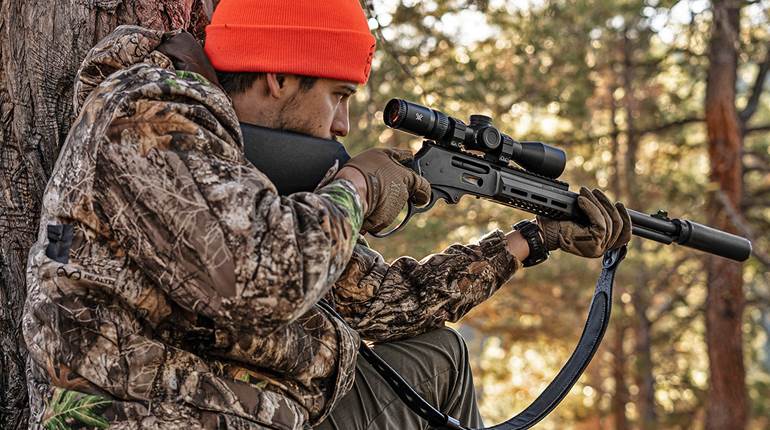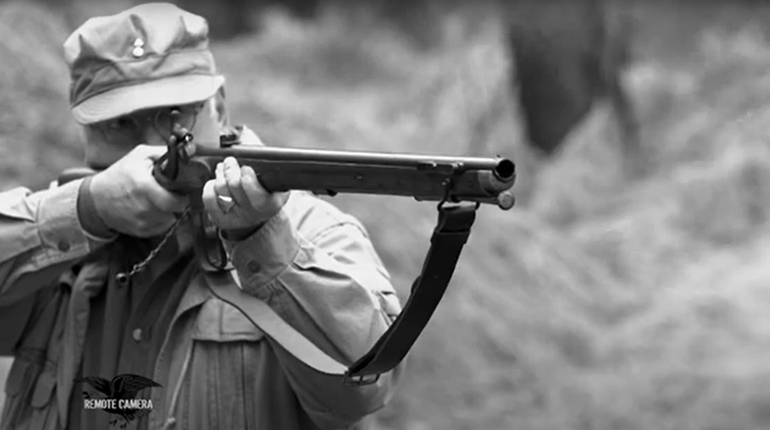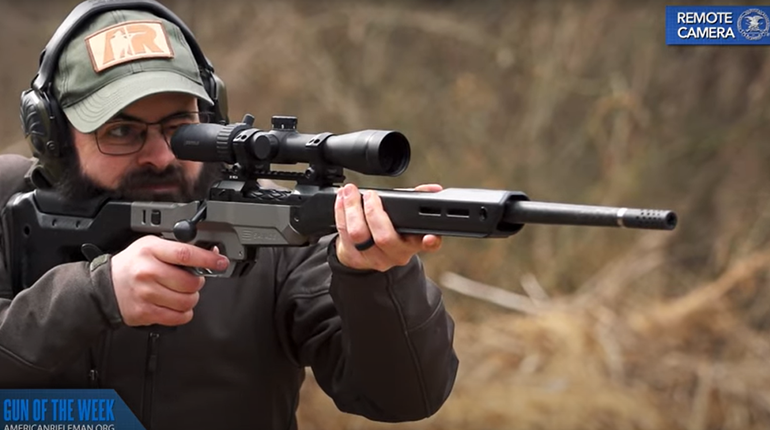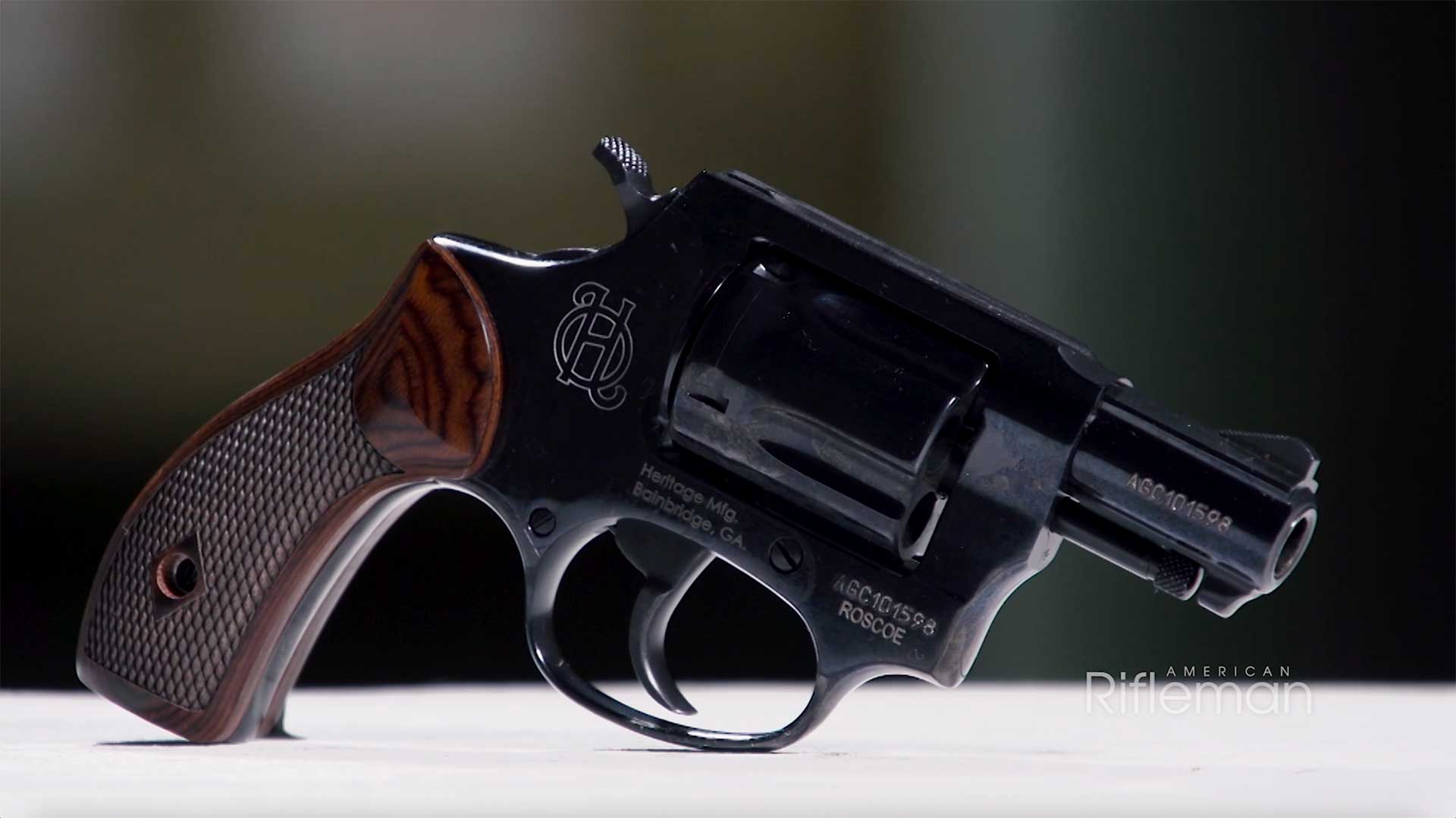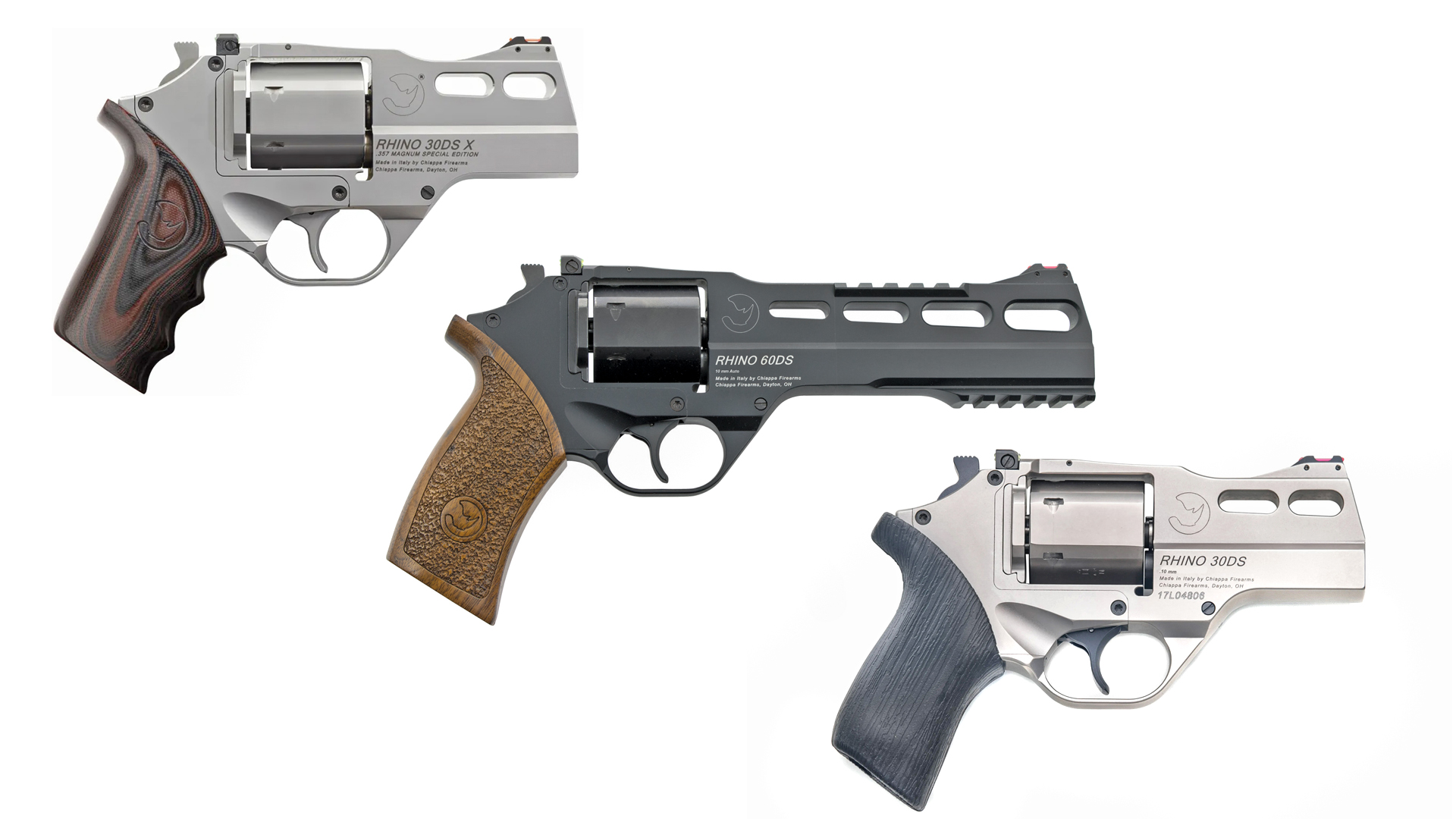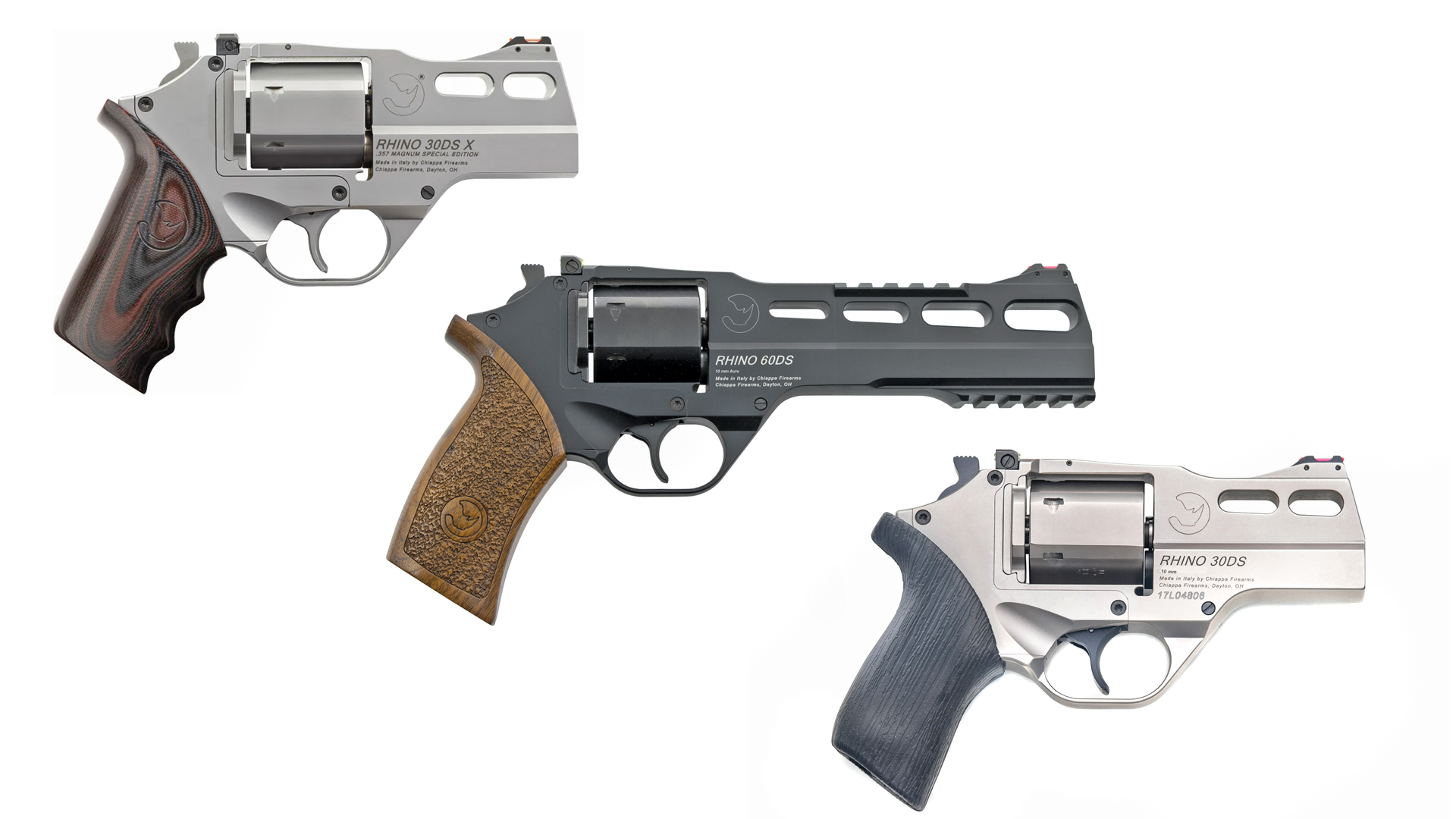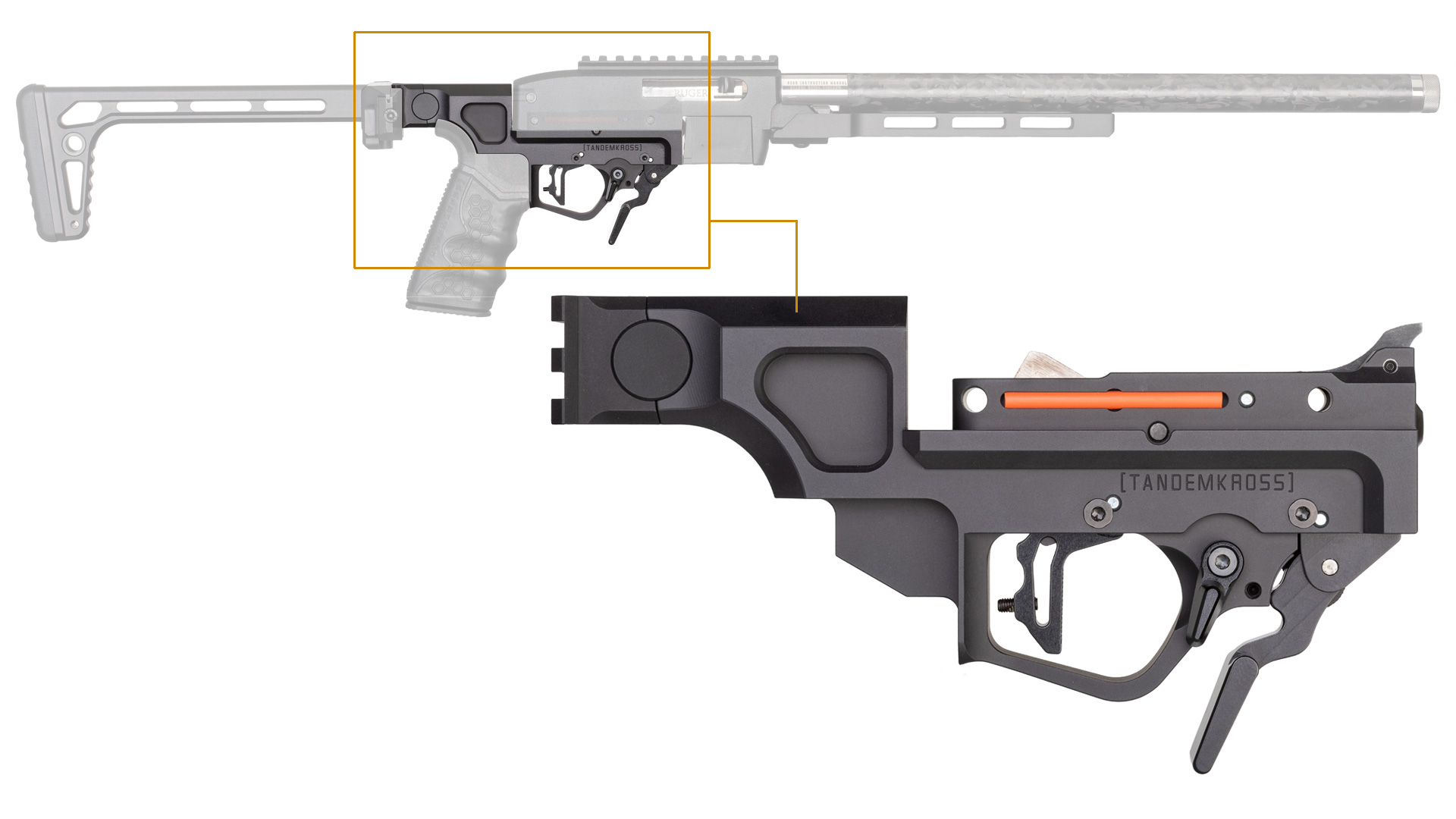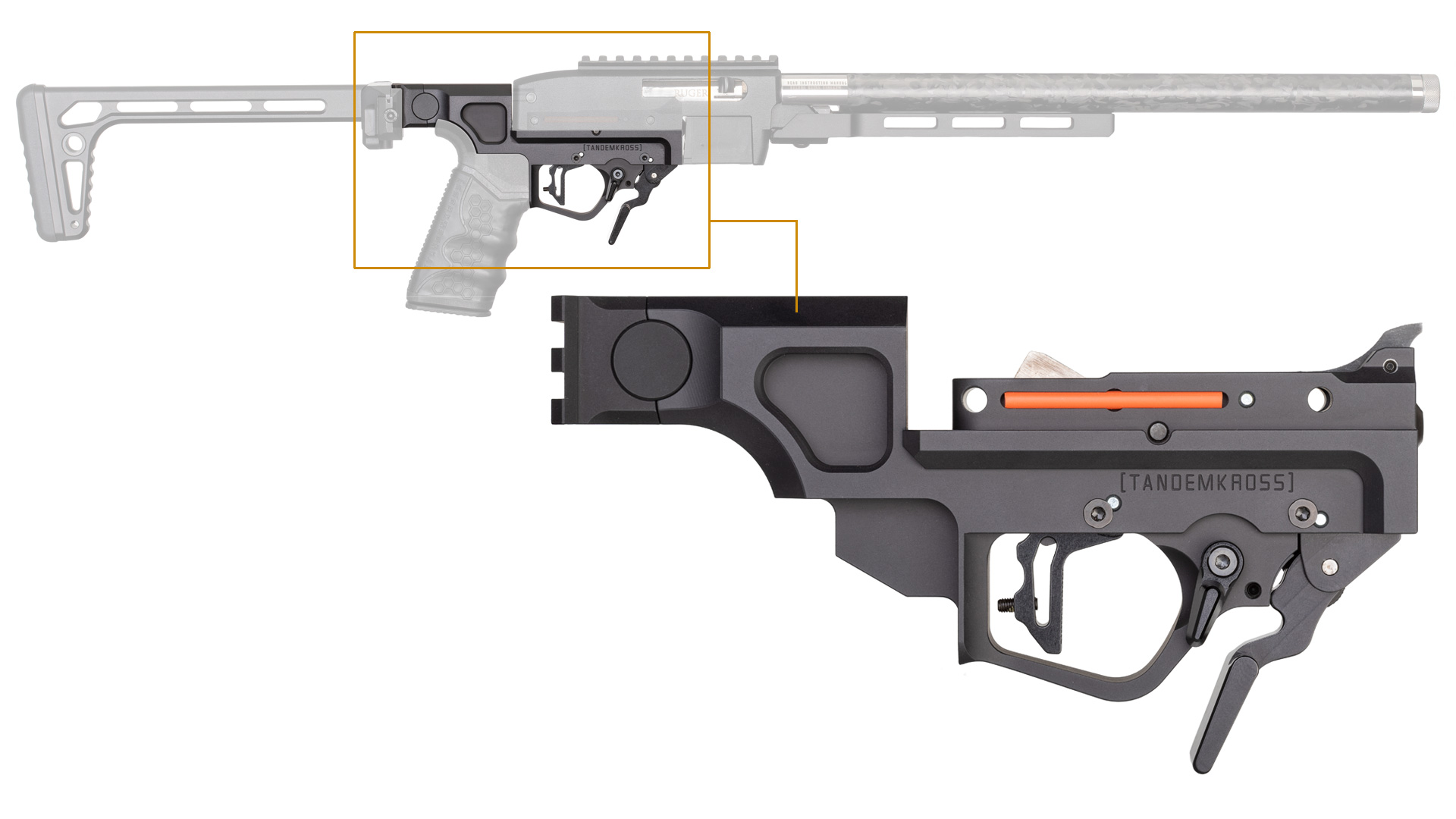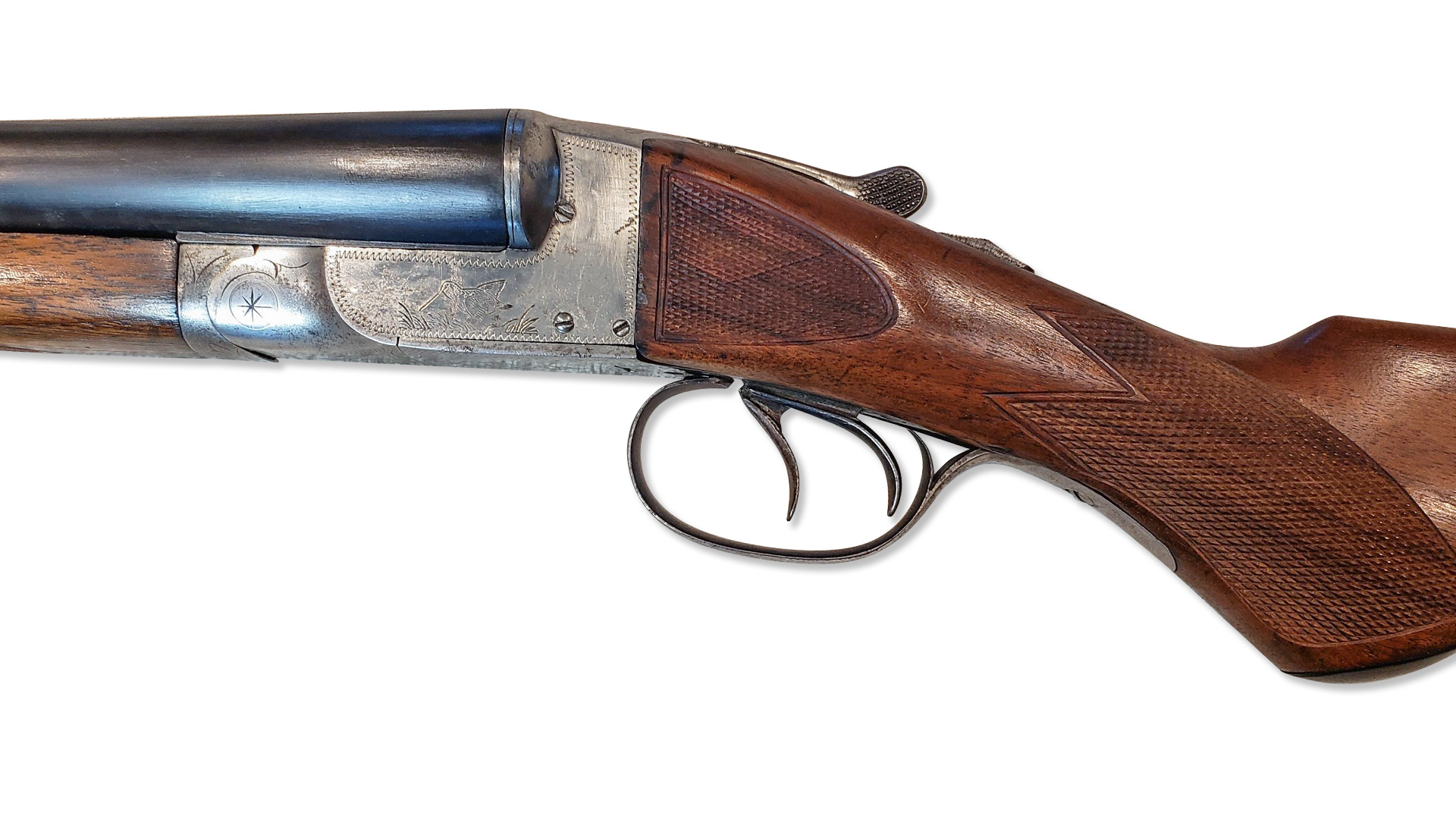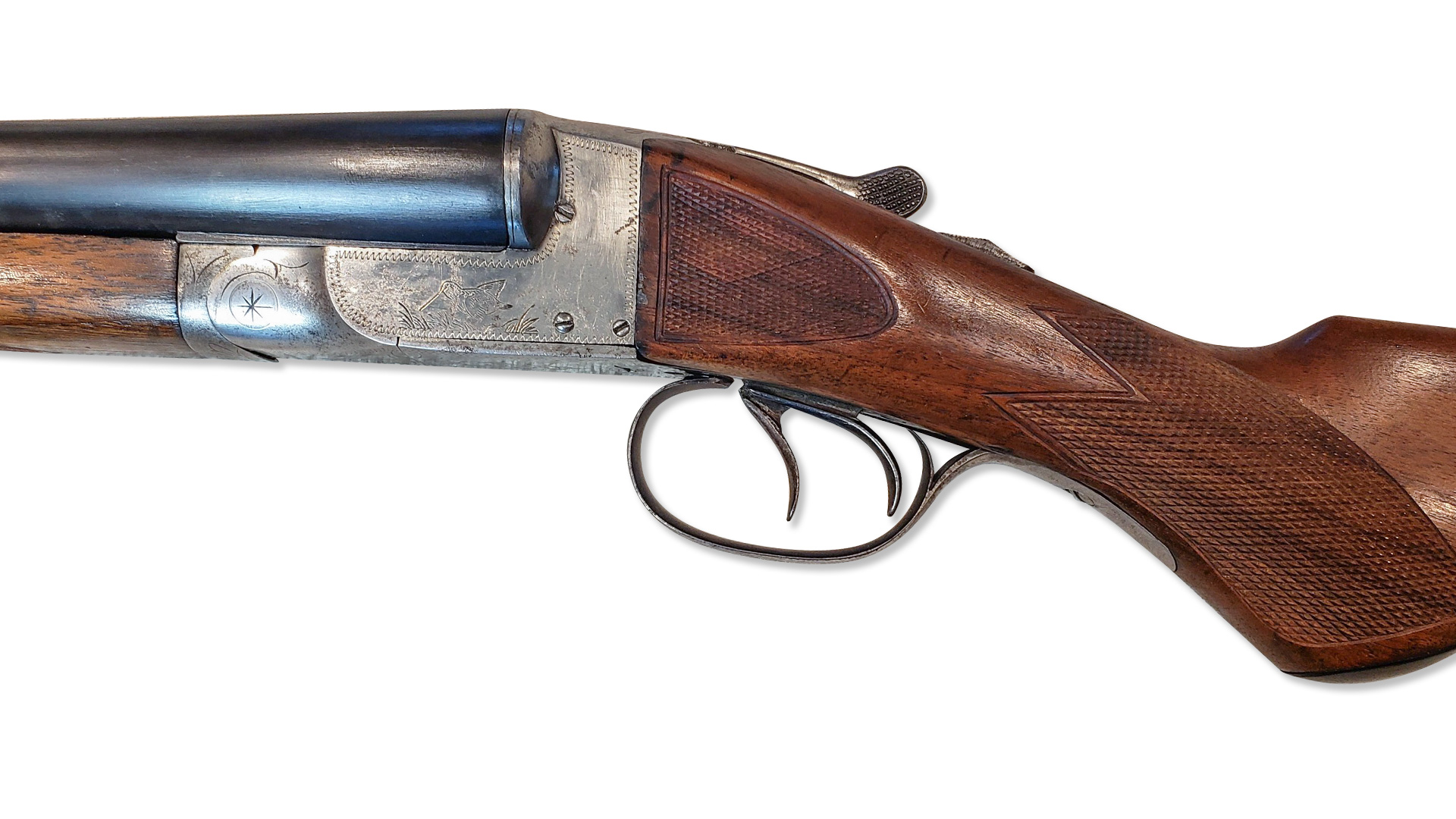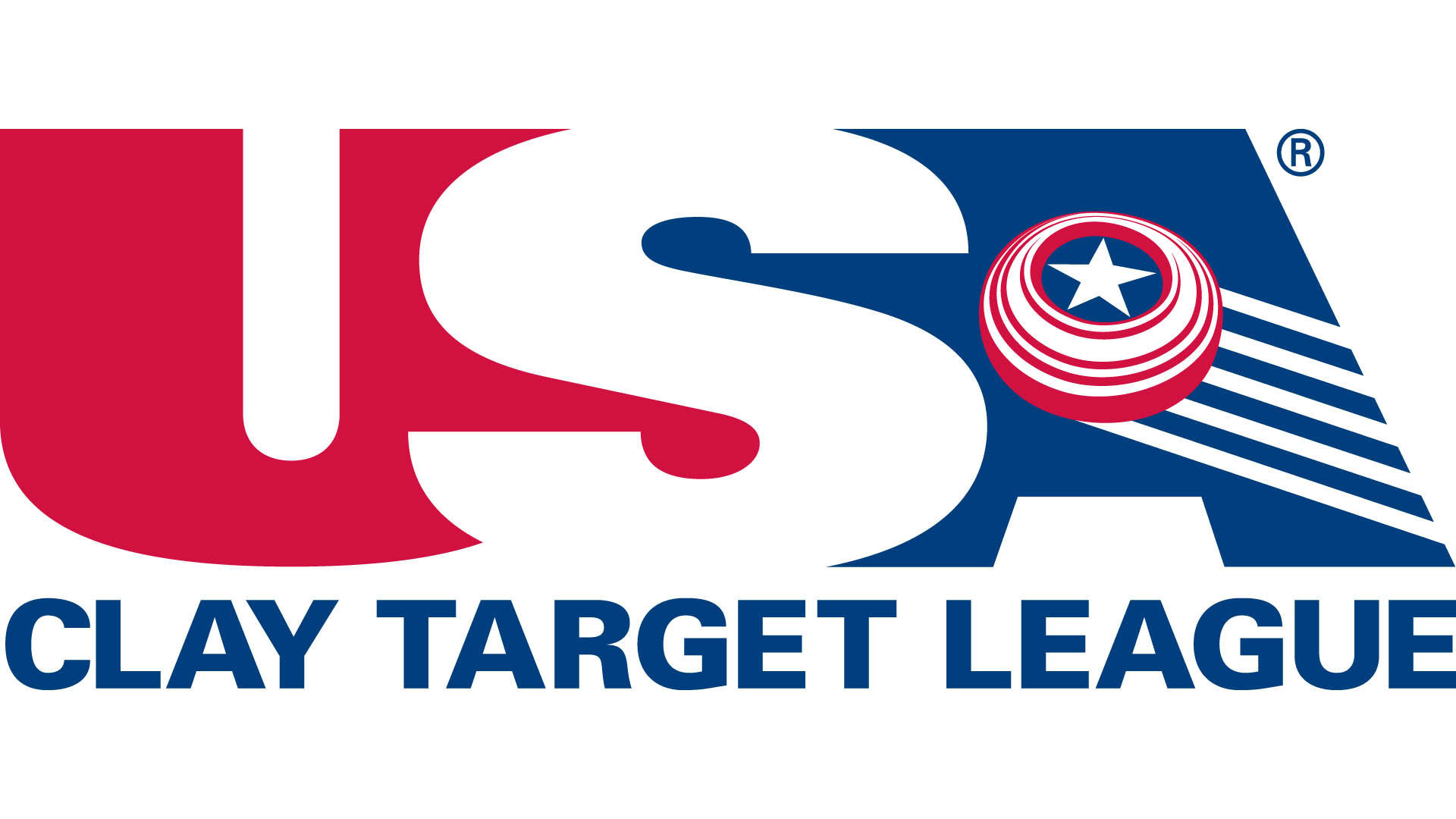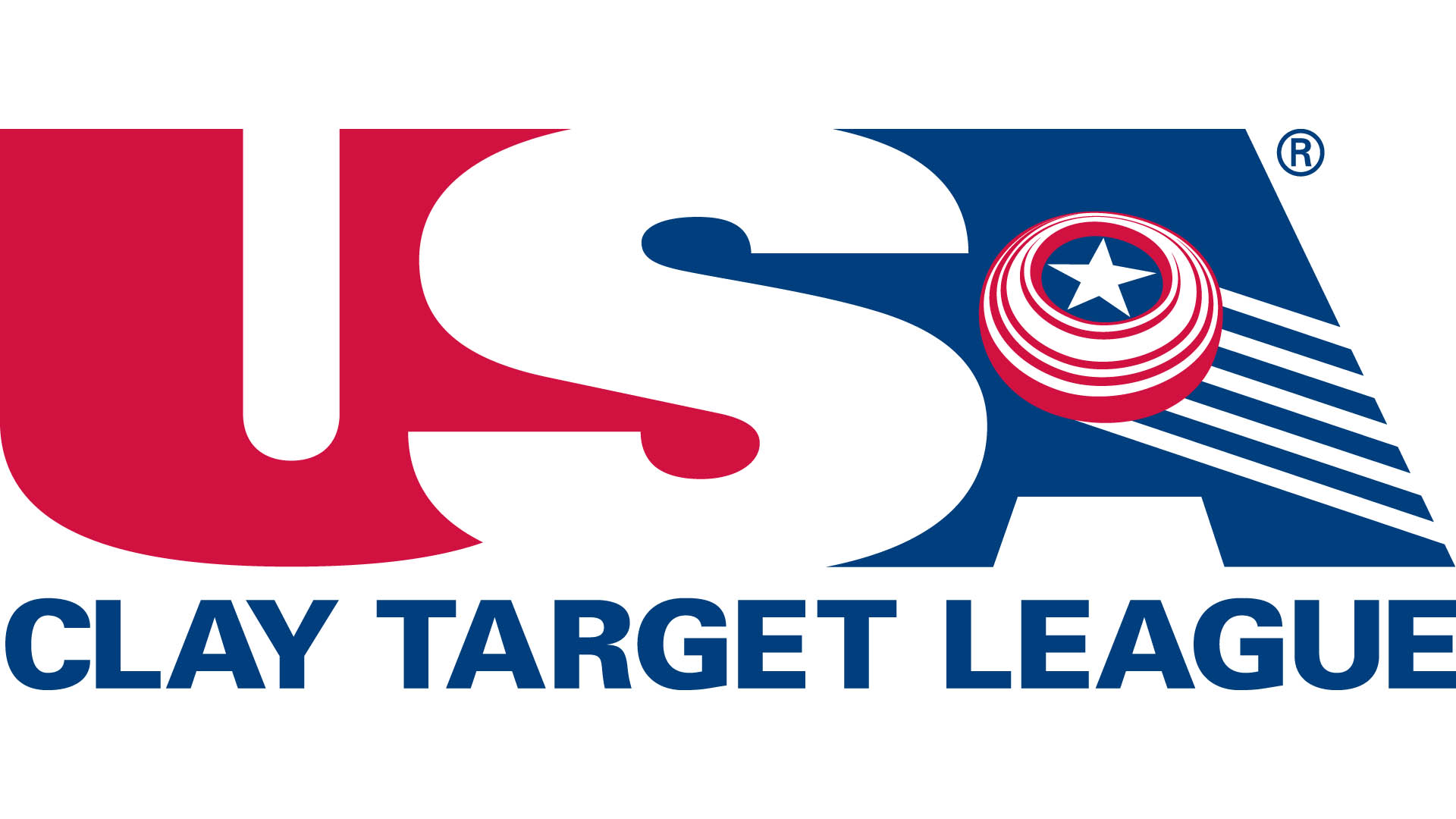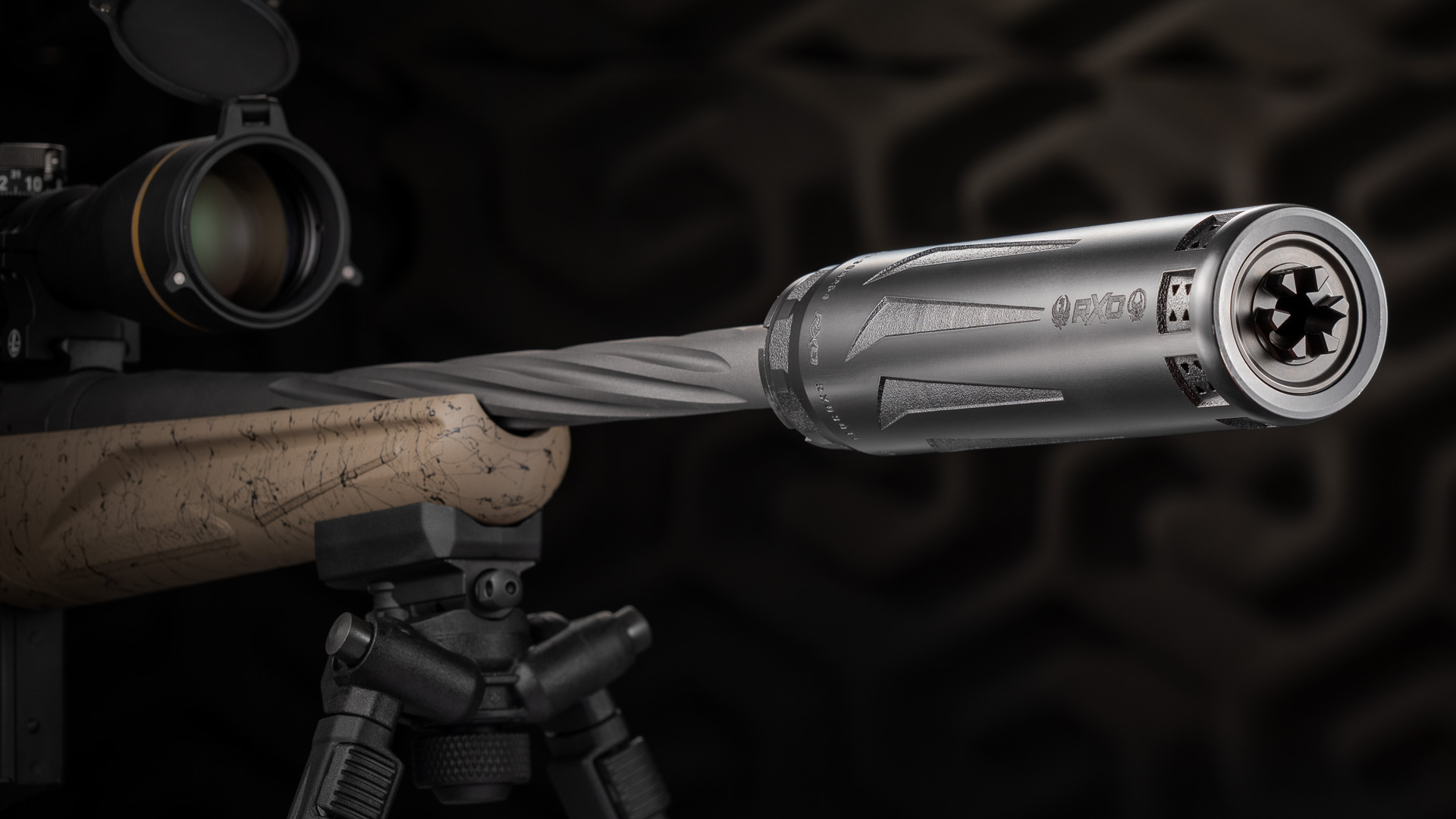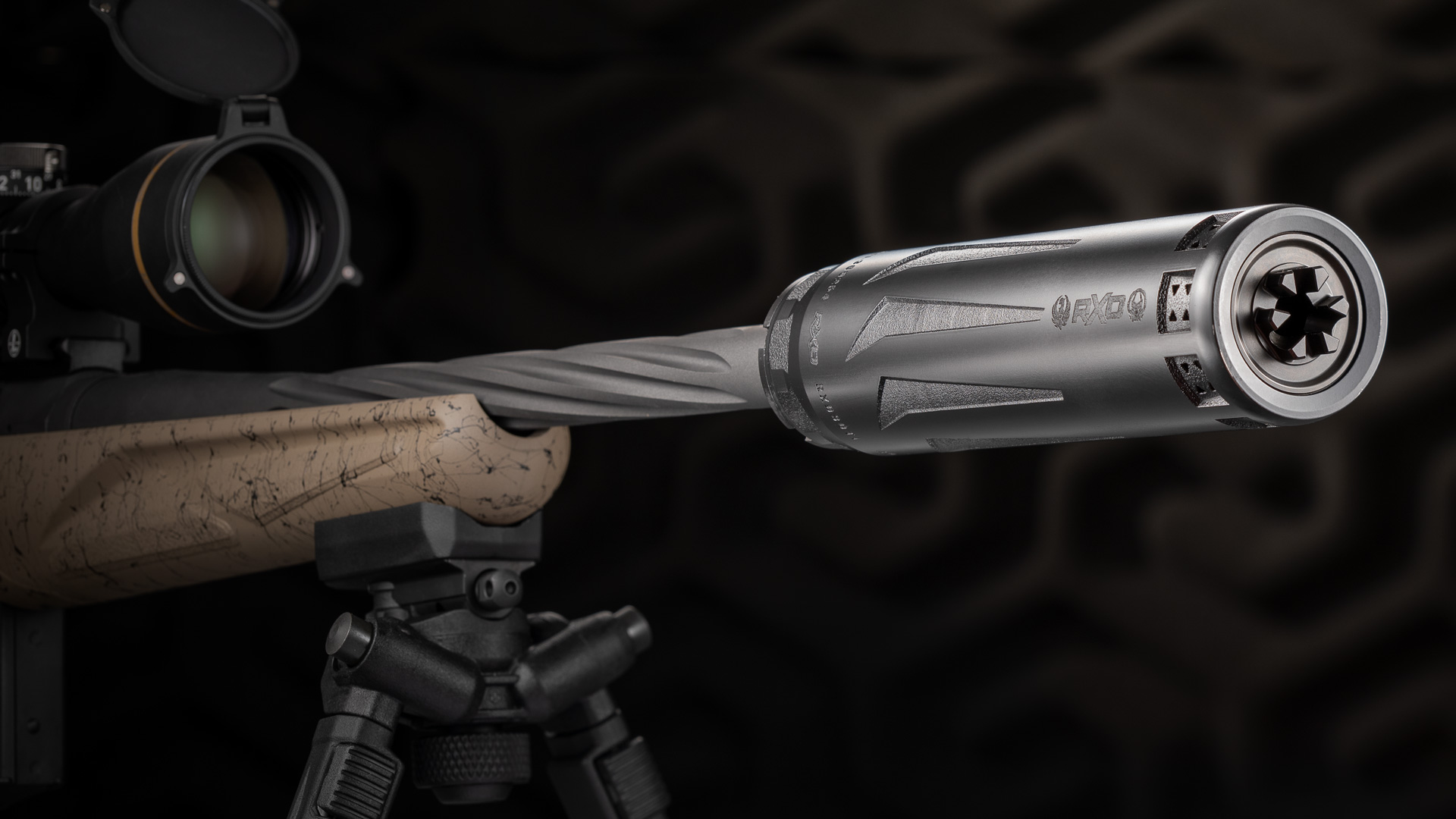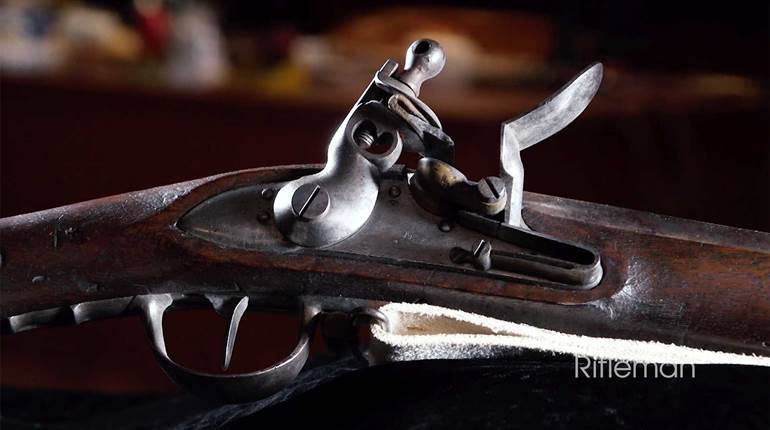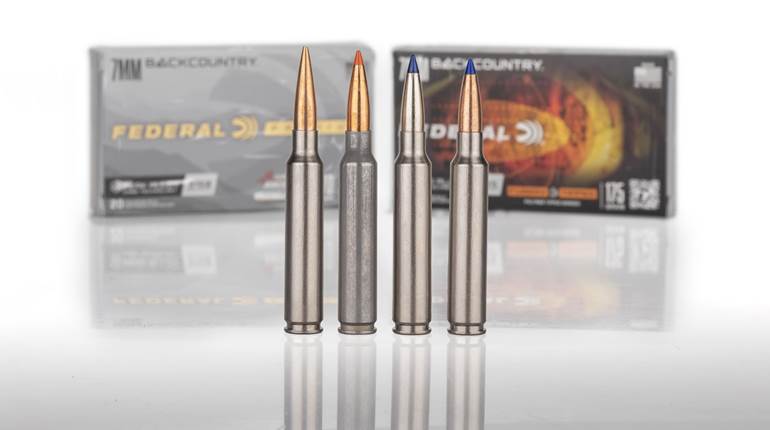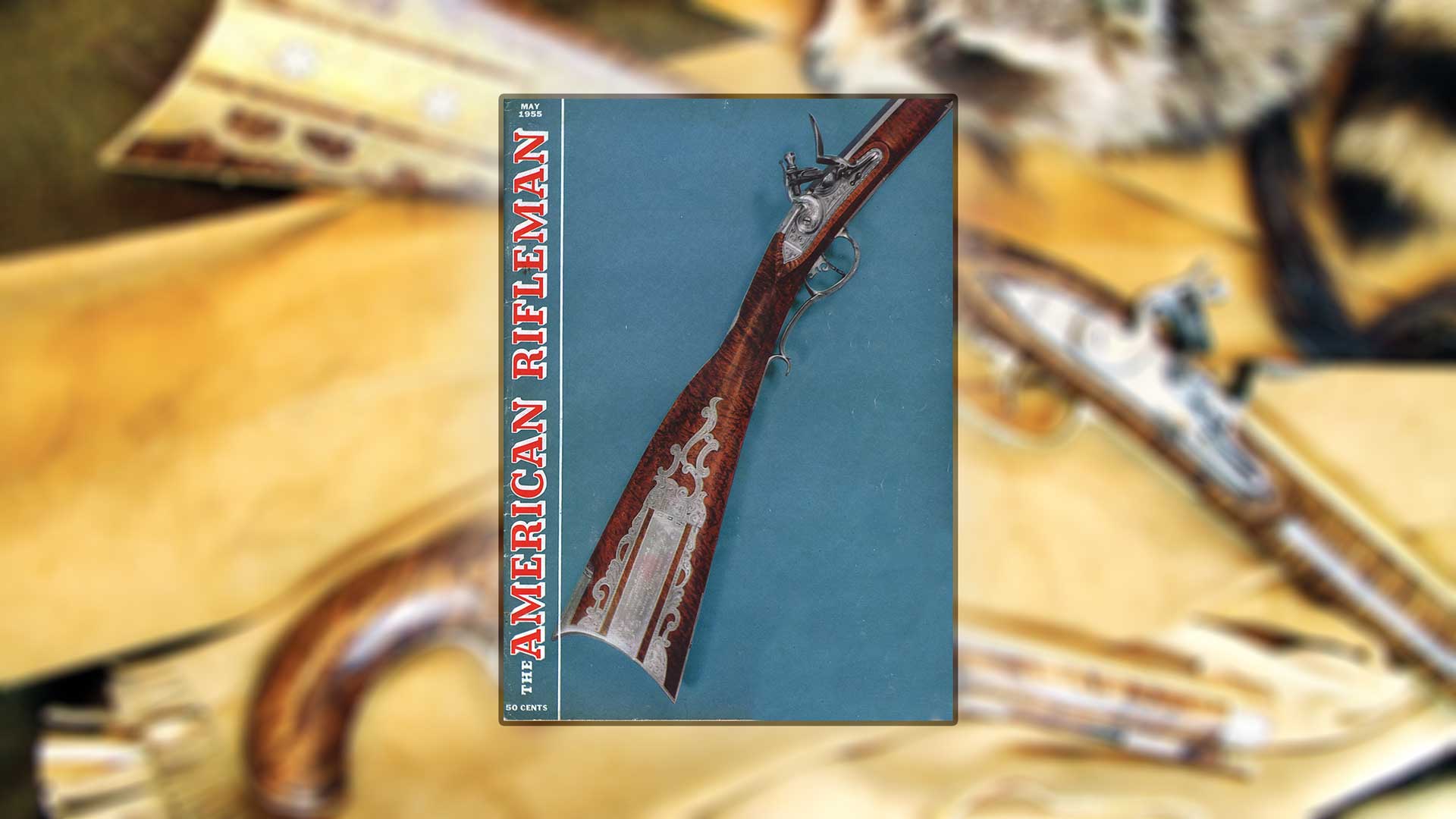
This feature article appeared originally in the February 2005 issue of American Rifleman and is now digitally remastered to celebrate the life of late Cecil Brooks, one of the most revered of America’s legendary gunmakers, who died at the age of 93 on September 24, 2006.
“Cecil leaves a remarkable legacy. No other gun maker of his time is as well-known or well-respected. His muzzle-loading firearms will remain prized and will be appreciated for many generations to come.” — Edward J. Land
At the 1955 National Rifle Association Annual Meetings in Washington, D.C., a tradition began with these words uttered by then-NRA President Alvin Badeaux: “A man should be prepared with a rifle for recreation and amusement during times of peace and for security during times of stress … .”
With that, he handed an exquisite flintlock long rifle to the first annual banquet speaker to be awarded what has become known as the Brooks Rifle. The photograph of that recipient—Robert B. Anderson, Deputy Secretary of Defense—was the first of many capturing essentially the same expression of surprise and awe. Charlton Heston, upon receiving his Brooks rifle in 1989, held it aloft and for the first time uttered his most famous signature words, “From my cold dead hands.”
No matter what the station of the man or woman clutching a prized Brooks rifle—from governors to senators to generals to national icons and NRA heroes, to U.S. President Ronald Reagan and last year, Vice President Dick Cheney—the image on those photos is the same; of mere mortals touching perfection.

That perfection—in the form of hand-worked steel, iron, brass, hard maple, and silver and gold all wed into the classic symbol of American freedom—is the creation of a very humble man. A sign with crossed rifles above the crude log shop in Lowell, Ohio, he built decades ago reads simply, “C.B. Brooks, Gunmaker (retired).”
Cecil Brooks has been making muzzleloading rifles since the mid-1930s when a left-handed Ohio blacksmith and gunmaker named Jim Weldon convinced him to turn his hand to the craft. Cecil had watched the old man make rifles and was taken with his method of finishing stocks. “He had two or three sitting there at one time, just as black as could be. He used nitric acid, then he put on tar, like you’d get in a can for a roof years ago. Then he’d scrape the stock down with broken glass. He did not have sandpaper or emery paper. The nitric acid burned the grain and the tar killed the acid. Made a nice yellow cast to that maple. Most ingenious old fellow I ever saw.”
"When you hear Cecil Brooks talk in his slow Ohio cadence, think of Jimmy Stewart in his later years."
Cecil—who learned blacksmithing watching his grandfather—had his own blacksmith shop and sign painting business in Belpre on a wide stretch of the Ohio River. “About 1929,” he said, “people started bringing in guns and I would repair them. I did anything a man could do to make ends meet. Did taxidermy work. Painted signs for 10 or 15 cents an hour. I got a quarter if the work was up high or I worked on riverboats.”

But that first Cecil Brooks rifle was a life-changer. His blacksmith/gunmaker friend gave him the wood. “I cut it out with a chisel. Took a rasp and rasped the hell out of it. It was pretty crude. I used an old Winchester octagon barrel that I drilled out. I think I made it in .38 caliber. It was a little short gun.” Crude by the high standards Cecil would later set, perhaps, but that first Brooks rifle resides in the Ohio State Museum in Columbus.
Until the NRA commissioned him to make his first presentation flintlock, Cecil Brooks rifles—fine though they may have been—did not evoke what would become his distinctive style. Many of his early rifles were patterned after arms made by legendary Ohio Valley gunsmiths, such as J. Vincent and Alexander Appleby, who built rifles in the mid- to late 1800s. Cecil had plenty of examples at hand with a remarkable collection of originals from the late 18th century through the early 20th century. A friend said, “At one time, Cecil had 75 Vincent rifles. He’d paid between $7 and $15 for them. When they started to get valuable, he sold them for as high as $75. Now they are worth $5,000. At the time, he needed the money to live.”
Until 1955, Cecil says, “I was making any style. I’ve got rifles you would never know I had anything to do with. I made anything that would make me a dollar. I was getting $100 or $150 for them. But today, if you get a Cecil Brooks rifle, you will know who designed it. I kept that NRA style. I won’t make anything else … .” Those $100 Cecil Brooks rifles, by the way, are capable of bringing five figures at auction today.

Initially, what has become the Cecil Brooks pattern—born with that first presentation gun—was the idea of retired Marine Maj. Gen. Merritt A. Edson, then Executive Director of NRA. In 1954, when he asked Cecil to build that presentation gun, he sent him a rifle as a pattern. “It was a very old gun—late 1700s—and very plain, but it had the shape of the gun we make today,” Cecil said.
Cecil recalls the care that he put into that first NRA “Brooks” rifle. “It was exceptionally nice. I wanted it to be as fine a muzzleloader as could be built.” According to the glowing report in the May 1955 American Rifleman, that first rifle measured 62 3⁄8" overall; with a 46 3⁄8" barrel rifled with eight grooves. The bore measured 0.37" across the lands and 0.39" across the grooves. In all, Cecil says he put about 600 hours into that rifle. On average, any presentation gun takes between 500 and 700 hours.
So, in the time since he built that first full-stock flint gun, if you add up the arms crafted by Cecil Brooks for the NRA during the past 50 years, they represent a conservative total of perhaps 27,000 hours of fine hand labor in Cecil’s shop.
Although all of the presentation guns he has made since that first NRA rifle are of the same pattern, each is a distinctive work—uniquely outfitted with elaborate, engraved sterling patchboxes; with sterling silver trigger guards and buttplates; and with intricately engraved locks. The inletting is flawless, with a seamless flow from metal to wood.

One thing that sets Brooks rifles apart from many presentation arms of other makers is that these are shooters. In fact, Cecil used to test fire and zero the NRA guns.
Except for the early NRA long-rifles, the barrels are made from blanks drilled by the late Dave Taylor of Little Hocking, Ohio. Cecil rifled most with a 1 in 62" twist and planed them 13/16" across the flats. They are mostly .38 to .42 caliber.
“Dave Taylor was a good friend of my father. I’d go down to work with him, and he would drill barrels, and then I would rifle them and plane ’em. I could rifle five or six in a day, but I could only plane two working from eight till eight.” From his collaboration with Taylor, he still has “all kinds of those barrels left.”
But over the years, he’s made barrels from all sorts of materials, like grist mill shafting from which he created heavyweight large-caliber barrels for muzzleloading bench guns.
Probably the most unique Cecil Brooks barrels have been made from scrap shafting from an atomic submarine—a tough alloy of bronze and magnesium, which he says, "makes for very accurate shooting."
The only two bronze-barreled guns—a matched full-stock flintlock rifle and flint pistol among the finest examples of Cecil’s work anywhere—are owned by friend and neighbor Phil Brown, a retired oilman. Brown waited 8 & 1⁄2 years for the rifle. When he finally got his rifle, Cecil told him he needed a pistol to go with it—a gun he made over the winter.

If Cecil has collected and made sufficient numbers of fine barrels, it is the same with stock blanks. He has hundreds of planks of fine curly maple carefully stored in dry locations. When he pulls one out, he can tell you the history of the tree it was sawn from, even with a half century gone by.
“I’m great for special maple. Red maple is the best. I’ve got this place full of maple planks that I cut as much as 50 years ago. It’s hard to come by a fine piece of maple today.”
Cecil can look at the bark of a mature tree and guess at the grain, but he says, “You still have to cut into them to find out if you are right.” Among the most beautiful series of blanks he has used and continues to use came from an ancient tree that highway crews took down with dynamite. He said the limbs were curly. “It was the finest ever cut in this country. I must have had 25 planks of that stuff.”
His advice for storing stock blanks? In a word, “Stabilize.”
“Air dry. Take them inside and stick ’em. Leave them outside and they will crack and get worms in them. You could take wood that’s been dry for 100 years and take it out and let it get damp and try to make something out of it. I don’t care how you fix it, it will warp. Got to have stable room temperature. And keep it that way before you make it into anything. And a lot of times, you have to reverse the planks to keep them from warping. Bring it into your house.”
Of all of the stocks he has made over the years, the most unique was not from fancy maple but from curly apple, but not just from an ordinary apple tree.
“When I bought this place in the ’40s, I had a friend—a man in his 80s, whose mother-in-law had been one of the original settlers. She lived in a stockade fort when Johnny Appleseed used to come along here. Next to the house, there was an apple tree—five feet through, mind you. It had Rambo apples on it … . It broke off, one year. We got some pieces out of that. I made a stock out of that that was curly apple. Imagine, knowing that Johnny Appleseed planted that tree, and I made a fine rifle out of it.”
On winter days, in a cluttered shop that is much as a working museum of historic machines and hand tools of the gunmaker’s trade, Cecil Brooks patiently engraves lockplates or patchboxes, or painstakingly inlets the stocks of his marvelous creations. At 92, continued to use the skills that the fine gunmakers possessed 200 years ago. If called upon, Cecil Brooks can still forge lockplates or hand cut rifle barrels—a craft he demonstrated for 25 years at the Ford Museum at Greenfield Village in Michigan.
Before Cecil's passing, he shared his reputation for perfection with a younger gunmaker, Lee Hamel, who had been apprentice for nearly 20 years. The rifle presented Vice President Cheney at the 2003 Annual Meetings in Pittsburgh, Pa., was the first to bear the names of both men inletted in brass on the barrel.

The two men became friends when Lee Hamel gave up police work, moved to a 60-acre farm he bought near Lowell and hung out his shingle as a taxidermist. After college, Lee was influenced by the film “Jeremiah Johnson,” and in 1972 made his first Hawkin. By 1979, when he met Cecil, Lee had already made 15 muzzleloading guns.
“Cecil would look at my guns and give me good advice. One day he asked if I would be willing to help him. I had to learn the architecture of the NRA gun.” In the meantime Lee won honors on his own as a journeyman engraver. Today Lee, as collaborator, does much of the shaping and inletting of the NRA guns.
“He’s as fine a craftsman as I’ve ever known,” mentioned Cecil.
Besides the passion for making fine rifles, the two men share many common interests—salvaging and rebuilding log cabins, hunting, fishing and taxidermy—but perhaps the most noticeable trait they share is the common touch and a humble sense about what they do.
“I’m really glad and proud that I am working with Cecil, and that I know Cecil real well. If nothing had ever happened out of this, I can say that I worked with the last of the original gunmakers.”
Lee, who has been to at least 10 NRA Annual Meetings with Cecil, said there is nothing quite like the reaction of the recipients of the Brooks rifles. “When you are sitting out in the audience and you see the speakers get the rifle—like Vice President Cheney—you can feel the appreciation. I like the fact that I had a hand in making the gun. It was signed with Cecil’s name and my name on it. There is nothing like this. When we are gone, there will still be people studying Cecil’s guns and maybe my guns. That gun we made for the vice president will be around for hundreds of years.
“For me—the long rifle is the most basic symbol of freedom for this country. If we wouldn’t have had the long rifle, we wouldn’t be here as a nation. We used it to defeat the British. It is an important symbol for the NRA,” he said.
For collectors, Cecil Brooks rifles are extremely hard to come by. People who have them hang on to them. But for two Marietta-area men, fate was most kind.
Lee Hamel tells the stories: “Cecil had made a gun that he’d taken down to the Marietta Museum, and they kind of had an agreement that it was going to be on permanent display. Well, Cecil had gone down there a few times, and the gun wasn’t out. It kind of bothered him, so he went down and told them he wanted to know where the gun was. They took him downstairs and they had the gun stuck up above the furnace ducts all dusty and everything.
“He took the gun and while he was leaving, going down the steps of the museum, there was a gentleman coming who recognized him. Cecil said he’d come down to get this gun and the gentleman wanted to know if it was for sale. He sold it to him on the spot.”
In a second instance, Cecil and Lee had made a fine .50-cal. half-stock with an extra shotgun barrel for a married couple, who upon seeing it said they didn’t want it after all. Cecil, who had the gun in his car, stopped at Wal-Mart. In the meantime, a relative of the couple had called Cecil’s wife, Mary, and desperately said she’d take the gun. At Wal-Mart, the greeter, a retiree, told Cecil how much he admired him and his work. The man said he’d always wanted a Cecil Brooks rifle. Cecil took him to the car and sold it to him.

Lee Hamel says there is a moral to all this. “If Cecil Brooks ever offers you a gun, you don’t want to say, I need to think about it.”
Cecil Brooks said he “won’t make anything else” beyond what has become the traditional Brooks design, but there is at least one recent exception—a Jaeger half-stock owned by his friend Phil Brown.
This rifle—a true one of a kind—is, in a word, exquisite. Stocked in walnut, the .62-cal. flint gun is the only rifle Cecil can remember making with a wooden sliding patchbox. This one is adorned with scrimshaw ivory as well. He modeled it after a broken relic that he said, “was the crummiest thing I’d ever seen.” On his superb version of the Jaeger, the inletting is so close that it recently took Cecil over an hour to remove the lock. The tapered “swamp” barrel was also difficult to bed. “It’s the only one I ever made and the only one I ever will make if I live to be 110.”

Although many would say he is an artist among craftsmen, Cecil is emphatic. “I am not an artist. I am not an engraver. I am a gunmaker.”
When someone asks Brooks that inevitable question—how many guns have you made?—his answer is always the same, “I have no idea.” It is in the hundreds for sure. But if he sees a particular gun he made—no matter how long ago—he can tell you volumes.
To jog his sharp memory for the benefit of their owners, Cecil Brooks’ rifles and pistols have a way of finding their way home for a visit.
For this story, Cecil asked friends and owners of his rifles and pistols to bring them to his home to be photographed and talked about.
Among the guns in that homecoming was an elegant, thin, almost delicate full-stock percussion in the J. Vincent style—the second rifle he made; this one in 1937.
Also coming back was a rifle that Cecil was making for his first wife, Laura, when she died in 1962. Laura was a shooter. She and Cecil won the NRA National Muzzle Loading men’s and women’s titles at Camp Perry one year. “She never got to use it, but she saw it when I was working on it. That was a nice one. That was one of the unusual ones. I spent a lot of time on it.”
He sold the rifle to a man in Wheeling, W.Va., and eventually bought it back, and upgraded it from its plain livery to a presentation rifle. He then sold it to a collector.
When Cecil Brooks himself refers to a piece he’s made as “fine,” it is indeed so. Among his all-time favorites is what he calls the “Shrine Rifle,”with Masonic symbols, gold bees and a gold rope beehive on the stock. He sold it at auction with the proceeds going to a Shrine charity.
Another gun that returned home was an NRA presentation full-stock made in the early 1970s. Cecil was reintroduced to this firearm when he received a call from a policeman in Miami—an NRA member who recognized the Brooks name on the top of the barrel flats.
The gun—worth thousands of dollars—had been found after a drug raid. The patch box had been pried off, perhaps because the illicit owners of the rifle had been too stoned to figure out how to open it. At any rate, the original recipient—who had been burgled—had died, and Cecil bought the gun from the estate. This winter, he is working to restore the rifle to its original glory. He is also beginning to work on an all-brass flintlock full stock, another one of a kind.
In all his experiences working with the NRA, Cecil says there is one event that stands out—presenting Charlton Heston with his Brooks rifle and, in a subsequent year, with a Brooks flint pistol.
“All of the people I’ve made guns for at the NRA are all nice. Most of them protected our country or our rights. The finest man I ever met was Mr. Heston.
“We ate an NRA breakfast at his table. I’ll never forget that. Mr. Heston had sat down to eat his breakfast. People came in to meet him and he kept getting up. Several of them said, ‘Now, Mr. Heston, just keep seated.’ He said, ‘No, sir, I was taught to stand up to shake hands with people when I met ’em. That’s the way I do.’ He was a man of the people. I don’t think he ever did get to eat his meal. Never saw a man so dedicated to his work. And he helped the NRA to go forward as much as any man I ever associated with.”
While Cecil Brooks’ life and work have touched many famous and powerful people, he lives simply in humble surroundings. He has dedicated his life to gunmaking, he has done all he can to honor the memories of Ohio gunmakers who came before him. On decoration day Cecil visits cemeteries—many where he has placed appropriate markers—memorializing long-forgotten Ohio gunmakers.

One such marker, in a Lowell cemetery—surrounded by massive red maples, which Cecil eyes with professional interest—pays homage to Alexander Vincent and his sons, the extraordinary gunmakers who had such unique influence.
Perhaps 50 yards away, there is another marker Cecil had placed—a massive granite monument that dominates the cemetery. This monument marks the spot of 12 plots he purchased to be used by local families who cannot afford a proper burial.
No matter how famous he has become, Cecil Brooks grew up poor—and he’s never forgotten it.
To subscribe to the magazine, visit the NRA membership page and select American Rifleman as your member magazine.


